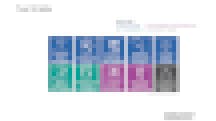
It seemed like the minute hand on the clock was stuck. “When will this PD end so I can get back to lesson planning and grading student work?” I thought to myself in silent desperation. Then, I followed up with a pledge: “When I am a principal, I am not going to do this to my staff.”
For those who have been educators for any length of time, I’m sure this is a familiar scenario. The question is, why do we allow it to happen? It’s up to those of us in leadership positions to prevent this. We must commit to creating meaningful, purposeful professional learning experiences for our educators.
Consider this five-step professional learning journey to ensure that your district professional learning experiences boost academic achievement and growth while building collective teacher efficacy.
1. Identify your five-year goal. How do you know what you must do today if you can’t identify where you want to go? Create the five-year vision for your school. Perhaps it’s an increase of three percentage points in academics each year for the next five years. Or maybe you want to see a four percent increase in graduation rate five years from now. It could even be something more abstract but equally important, such as steadily increasing student satisfaction with school.
You need to have goals to understand where you are going. You can only develop the goals through a combination of evidence: attendance rate, three-year historical state assessment data, graduation rates (if applicable), CTE completion (if applicable), student evidence in ongoing formative assessments, teacher observations and qualitative feedback from students, teachers and the community. Of course, your own observations are also a piece of the decision-making process. Bring all of these data sources to your leadership team, and begin to explore appropriate goals. From there, you can construct a solid professional learning plan for your team.
Not sure how to set a five-year plan? Here’s a free resource to help you get started.
2. Understand your teachers’ needs. According to the 2019 Hanover Research report “2019 Teacher Perspectives on Professional Development,” 92 percent of teachers reported that the most satisfying professional learning experiences were those which external partners provided. Similarly, 92 percent of teachers indicated that most relevant professional learning was job-embedded coaching.
As we reflect on what our teachers need, we must ensure that the professional learning designed (based on our five-year plan) includes job-embedded coaching so that the theory is put into action. Professional learning is only as good as the application of the learning. Additionally, ensuring that high quality professional learning is available to all can increase leaders’ ability to recruit, hire and retain teachers.
3. Prioritize student voice. Schools were created for students, not for adults. That’s sometimes tough to hear. But when was the last time we asked students how the learning was working for them? How can we make learning more relevant for them?
The inclusion of student voice ensures that we are creating learning experiences rooted in rigor and relevance—real-life learning that matters for students. If students can Google an answer, is this something that we should be teaching? I’d rather see students engage in high levels of synthesis and creation in performance tasks. Building a rigorous curriculum informed by student voice is paramount.
4. Listen to your community, too. We are preparing students for the 4 E’s: Enrollment (two-year, four-year, skills, trade), Enlistment (armed services), Employment (high-wage, high-demand) or Entrepreneurship. But, for that to happen, we must ensure that we are building relevant experiences based on what our employers need.
Consider constructing a community advisory team made up of representatives from each of the 4Es. Bring them together with your staff to discuss the skills needed for today’s—and tomorrow’s—employees.
Here are the top 10 skills needed for today’s workforce, as identified by the World Economic Forum:

5. Develop your professional learning journey. Okay, now you know where you want your school to be in five years. You’ve heard from your teachers, students and community members. It’s time to construct your purposeful and intentional professional learning plan.
Research tells us that ongoing, job-embedded coaching, mixed with whole-group professional learning, provides the most impact for staff. Keeping this in mind, spend time in late spring and early summer, and design the entire year’s plan. Be sure to have specific outcomes associated with the experiences, and be explicit with your staff about each of those objectives. Be intentional in drawing connections to the feedback from stakeholders and how it matches the five-year goal. This feedback helps your staff understand why they should become invested in the plan.

When we craft meaningful professional learning experiences for our staff, the minute hand flies around the clock, leaving everyone in the room wanting more.